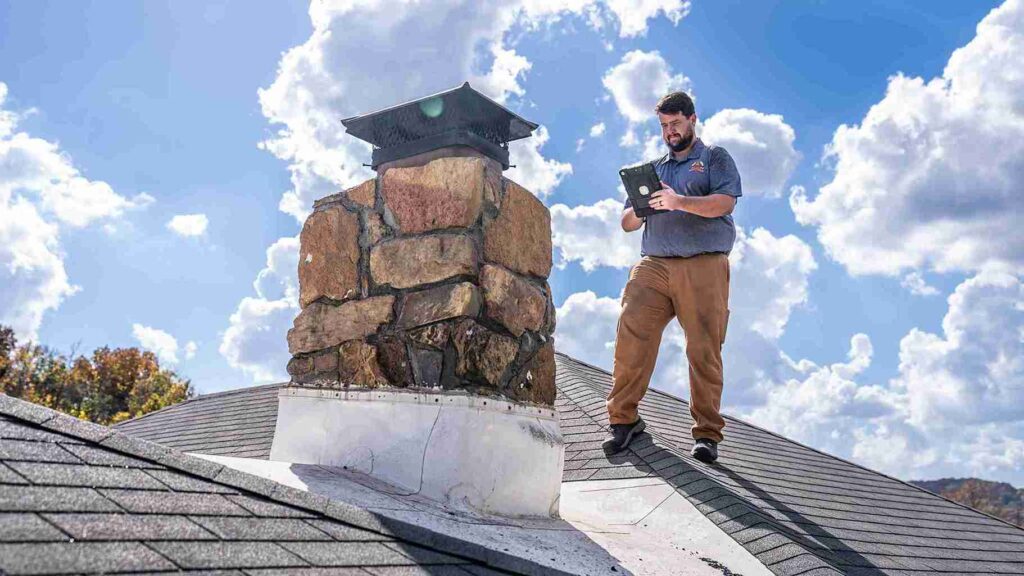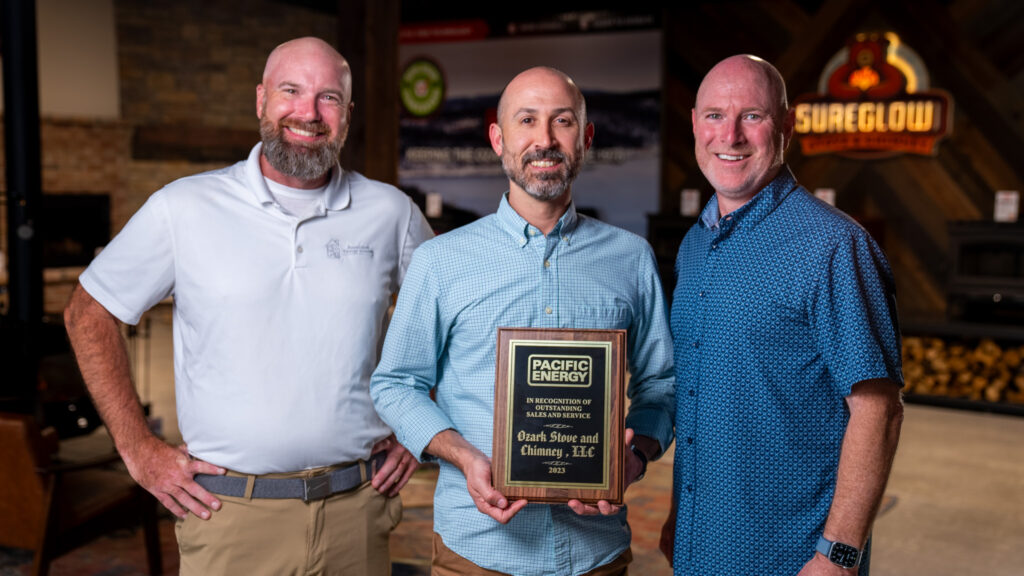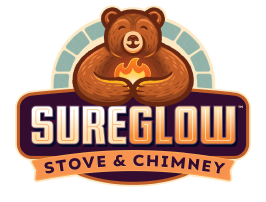Level 1, 2, and 3 Chimney Inspections
What Is a Chimney or Fireplace Inspection?
A chimney inspection is an overview done by a professional chimney sweep that ensures your chimney and fireplace are free from blockages, cracks, or structural damage that could impact safety or efficiency.
Think of it like your annual medical exam. During a physical, your doctor might perform diagnostic tests or ask you a series of questions to get a better idea of your overall health. It might seem like a silly comparison, but when one of our professionally trained technicians comes out to your home to perform a chimney inspection, they are essentially doing the same for your flue and fireplace — making sure all is well and good so that you can enjoy your fireplace with peace of mind.
And, just like in an annual checkup with your physician, if a chimney sweep finds something slightly amiss during your yearly inspection, they are able to diagnose any issues or potential problems swiftly and early before things escalate.
Why Do I Need a Chimney Inspection?
Many people assume that chimneys are strong because they are typically made of brick or another type of stone. And they are – but only if they’re properly maintained and cared for by an expert.
Natural weather events are always a structural threat to chimneys, regardless of your location, and fall and winter present their own challenges due to the freeze/thaw cycle, if you’re in an area where temps drop low each year.
In addition, animal tampering, creosote accumulation, and clogs from outside debris can all wreak havoc on a chimney system – whether it’s used frequently or not at all. Long story short – if you have a chimney, booking annual inspection services is a must.
Our technicians are certified by the Chimney Safety Institute of America (CSIA) and are trained to spot all of the defects and signs of damage you may not be able to see for yourself. At SureGlow Stove & Chimney, we pride ourselves on doing the right thing and providing the best customer service around.

Contact Us Today!
How Many Levels of Chimney Inspections Are There?
There are three levels of chimney inspections available. Inspections are recommended to be completed every year, or when a homeowner makes a systemic change, replaces an appliance, or is preparing to put their home on the market.
What Is a Level 1 Chimney Inspection?
A level 1 chimney inspection is the most common type we perform. It is a basic assessment that is recommended when the fireplace is performing efficiently and there are no concerns of underlying damage. If you haven’t made any major changes, and if you book annual maintenance every year before your burn system, this level should be all you need.
During this inspection, we will do a visual examination of all accessible portions of the chimney’s interior and exterior. We will check the masonry for signs of water damage and inspect the chimney liner for potential creosote buildup. If a creosote buildup is found, we will determine how severe it is and recommend the most appropriate cleaning option.
What Is a Level 2 Chimney Inspection?
During a level 2 chimney inspection, we use a closed-circuit internal camera to get a thorough look at the chimney and flue, making it a bit more detailed than your basic level 1 overview. In some cases, we may require access to surrounding areas such as attics, crawlspaces, and basements. If you use your fireplace, furnace, or wood stove frequently, a level 2 inspection should be conducted annually. A Level 2 inspection may also be recommended if you have noticed any changes in the operation or appearance of your home heating appliance or chimney since your last inspection, or if there are any noticeable damages.
Level 2 chimney inspections are typically recommended under the following conditions:
- There has been a change in the way the system is used (e.g. after a fuel conversion or insert installation).
- The chimney or adjacent area has experienced some sort of damage.
- You are buying a new home and want to ensure the fireplace, wood stove, or gas logs and chimney are in good condition.
- There will soon be changes in home ownership – sale or transfer.
- The exterior chimney has been damaged.
- There has been any water damage to the chimney.
- The flue has been damaged and needs to be repaired.
- Your chimney has never been inspected, but you plan to use your fireplace, furnace, or other home heating appliance soon.
- You plan to use your fireplace for the first time after a long period of inactivity.
- Your home has had recent renovations that may have impacted the integrity of your chimney.
What Is a Level 3 Chimney Inspection?
Level 3 chimney inspections are the most in-depth type. Unfortunately, they are also the most disruptive because we need to access concealed areas of the chimney. This may require the removal of part of your chimney or the surrounding walls, ceilings, or siding.
Level 3 inspections are only recommended when there is suspicion or signs of severe structural damage, such as a chimney fire, lightning strike, or a severe storm that causes a tree to fall onto your chimney.
What Could Happen if I Don’t Have My Chimney Inspected?
A chimney that has not been properly cared for is a potentially catastrophic disaster waiting to happen. And yes – inactive and infrequently used chimneys can still present hazards that can have dangerous consequences to your family and your home. What can happen if you don’t give your chimney the attention and maintenance it needs?
Fire Risk
A chimney fire is one of the biggest risks associated with a neglected chimney. Over time, combustible byproducts can build up in the interior of the flue, one of the most concerning being creosote – a combustible tar-like substance that clings to the interior surfaces of the chimney, including the flue lining, chimney walls, and smoke chamber.
Creosote occurs in three stages:
- The first stage appears as a light, flaky soot.
- Stage two presents as hard, shiny black deposits.
- The final stage of a creosote buildup is a highly combustible gummy/glazed tar.
Only a certified technician can positively identify the stage of the creosote and perform the proper removal to return your chimney to working order.
Obstructions
Chimney obstructions can happen in a variety of ways: outdoor foliage can fall into a chimney with a cracked or missing cap, animals can make the cozy space their home, bricks and masonry can chip away and accumulate, and the list goes on…
One common trait all of these things share is that, if the debris is not removed, smoke exhaust cannot vent properly to the exterior of your home. This can lead to toxic fumes such as carbon monoxide escaping into your living space, putting the health of you and your loved ones at risk.
Structural Issues
Chimneys are vulnerable to natural elements. Rain, snow, wind, and falling debris can all impact the integrity of your chimney both in the short and long term. Chimneys that are not waterproofed or professionally maintained may be subject to water damage with continuous exposure. This can cause spalling brick, a damaged liner, and mortar deterioration.
In addition, strong winds can cause things like tree branches or large pieces of flying debris to fall onto your chimney and compromise its overall stability.
Lackluster Performance
If a chimney is not tended to regularly, it will not work as efficiently, meaning less heat in your home. When a chimney’s airflow is compromised by obstructions, it will increase fuel, gas, and oil use, all while decreasing heat output.
In the end, if you’re investing in a home heating appliance, you want it to work – and work well! Trust us from the start to minimize the chance of threats and other hiccups down the line.
How Do I Know if My Chimney Is Safe To Use?
n many cases, you won’t know if your chimney is safe, which is why booking your yearly inspection is so important. Sure, sometimes, there are obvious signs of needed maintenance, like extreme soot buildup, layers of creosote caking the walls of the firebox, visible cracks, and crumbling mortar. But there are also a ton of instances where the only way you would know something was wrong or off is after your chimney has been inspected from the inside out by a professional.
That’s why we’re here, to perform the routine maintenance that keeps your chimney not only functional but operating in tip-top shape. We provide the best chimney and stove services near you. Give us a call or book online today.
How Do You Inspect Your Chimney Yourself?
This, friends, is a trick question because the answer is: you don’t. Seemingly simple in structure and function, chimneys are actually deceivingly complex and dangerous when you don’t know the ins and outs of the system. Luckily, here at SureGlow Stove & Chimney, we do. We are professionally trained to do the dirty (and, believe us, it gets quite dirty) work and ensure everything is in optimal, functional condition.

Need To Book Your Chimney Inspection?
Please call us for more information about our financing options and to start your application online. We’re happy to work with your time frame and budget. You can also reach out online.
